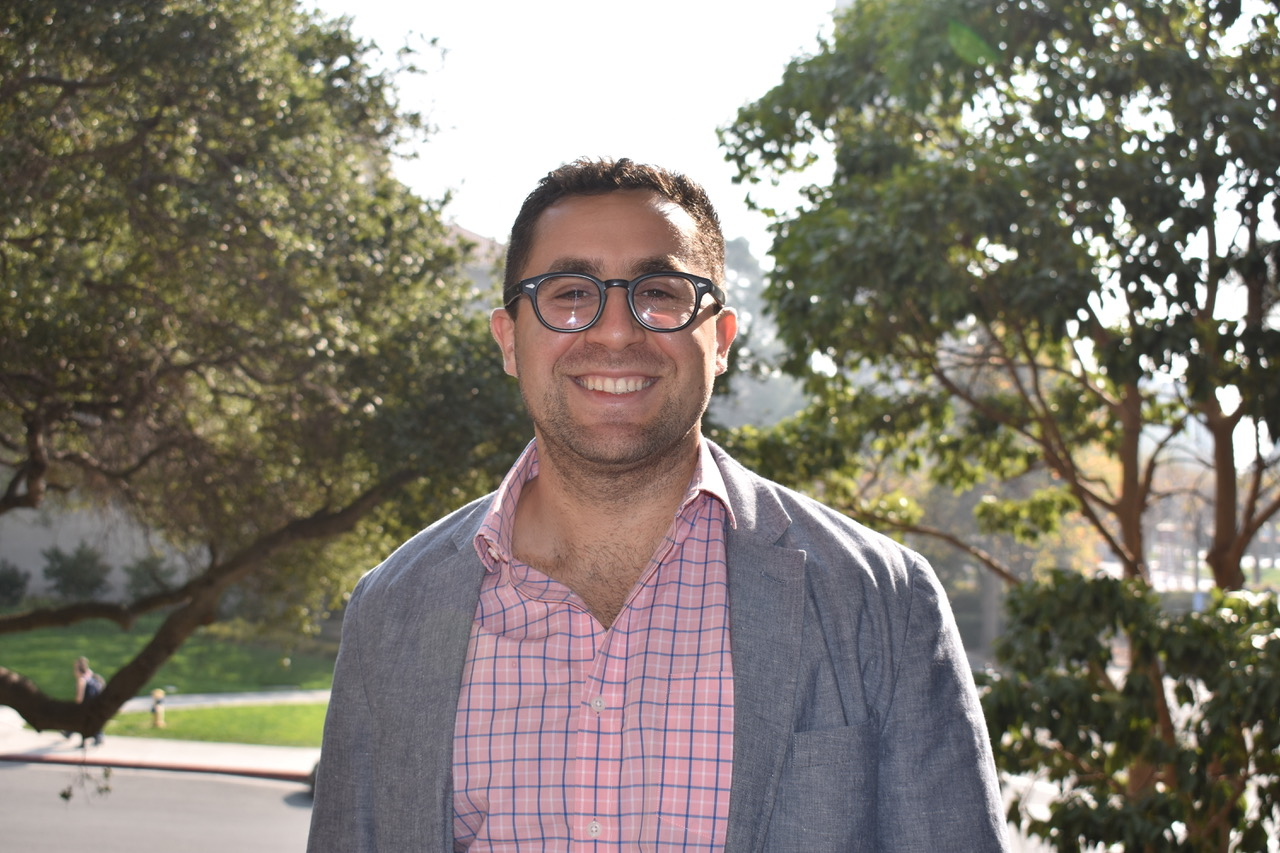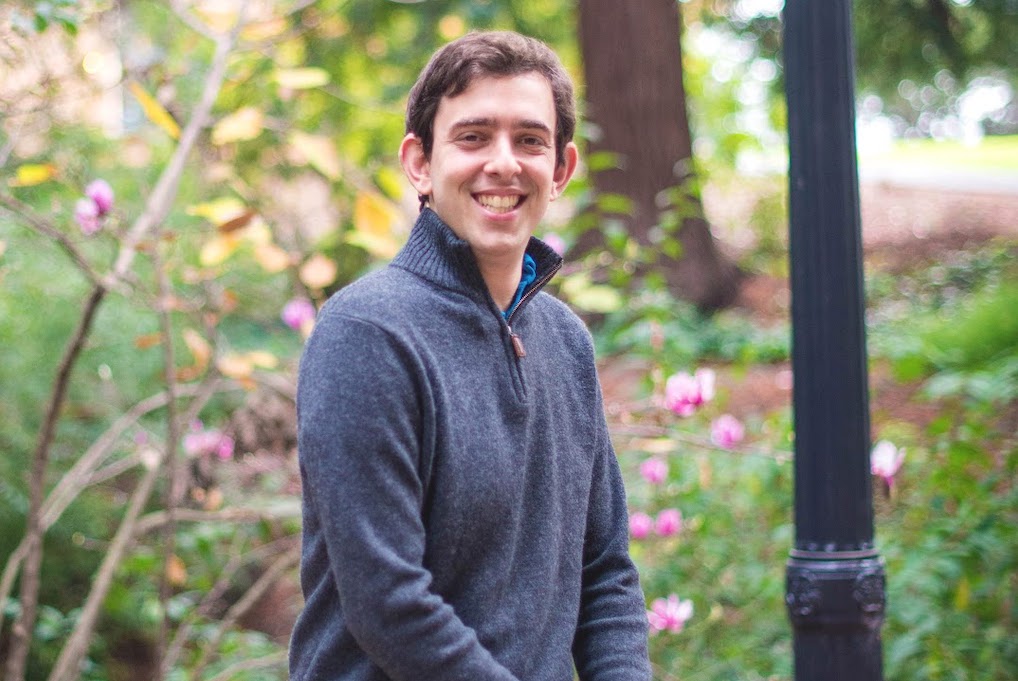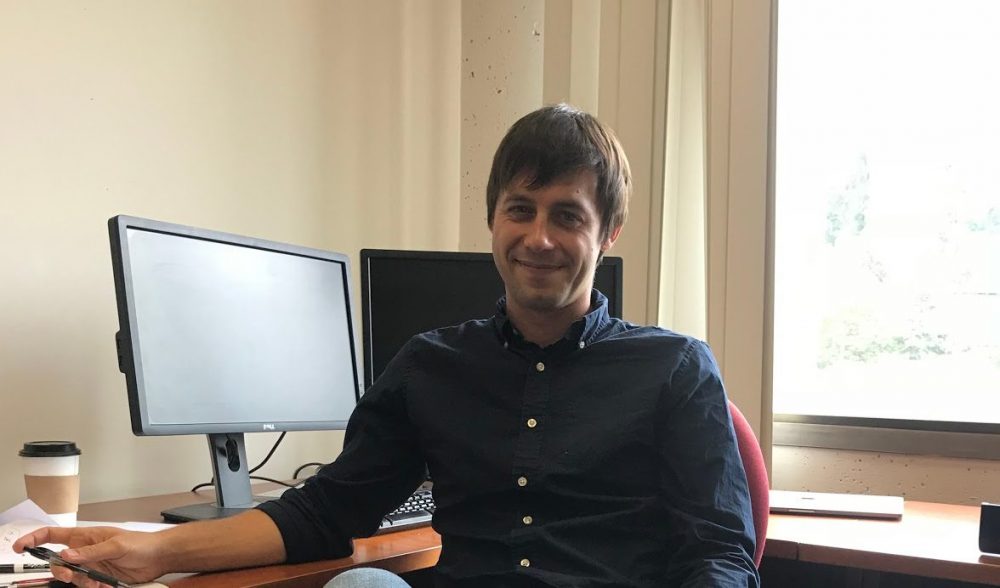
JOSEPH NG – SEPTEMBER 19, 2018
Dmitry Taubinky is an assistant professor of economics at UC Berkeley and a faculty research fellow at the National Bureau of Economic Research. BER staff writer Joseph Ng sat down with Professor Taubinky on September 19, 2018 for the following interview.
Joseph Ng: I’m here with Professor Dmitry Taubinsky. I would like to begin by speaking with you about your personal journey with economics and delve deeper into your research interests and academic focus. ?
Dmitry Taubinsky: Sounds great.
JN: Could you being by telling me a little bit about your background, how you got involved with economics?
DT: I actually started out as a math major in college, but I always wanted to do something that’s more in the real world. I was always interested in psychology, and I generally just enjoyed the social sciences, so economics seemed like it would allow me to combine my interest in math with my interest in the real world. Early on I contacted David Laibson, who is a behavioral economist at Harvard, and I got very lucky and got a chance to work in his group as a research assistant starting the summer after my freshman year. Getting a taste for research early on is what really pulled me into economics. I spent the rest of my summers in college working on research in David’s group, and every summer I just got more and more excited about economics. So it was very clear for me that I wanted to go to graduate school and do something in the area of behavioral economics.
JN: I can tell, just listening to you talk and the way you smile when you talk about it, it’s something that you’re really passionate about. I looked at your website and it says you conduct research at the intersection of public economics and behavioral economics—what about that specifically compels you so much?
DT: What I really like is the following combination: economic theory, real world relevance, and data. You need all three for this kind of research And so I just find it a very rewarding area to work in. I think it’s also a relatively unexplored area also, and so I also advise students to consider working in this area. I think there are many important open questions there.
JN: Like what kinds of questions?
DT: Well, the really big challenge in this area is, how do we figure out how socially beneficial a policy really is, once we get away from the assumption that people’s choices reveal what they really want? We call that the revealed preferences assumption in economics, and it’s a really powerful one. That’s the assumption that really allows you to connect data to theory in a very direct and transparent way; if you assume that people always choose what they want, then you have a very immediate link from a data set of people’s choices to what’s actually good for them, and therefore to the social welfare effects of various policies.
DT: Unfortunately, people’s choices don’t always reveal what they really want. For example, a very basic and real psychological consideration is that people might get confused by taxes that are complex (certain kinds of taxes might not be fully salient, like the sales taxes that are not included in posted prices), or people might over-consume unhealthy foods because of limited self-control or incorrect beliefs, or people might not know the energy costs of various kinds of appliances. There are many different ways in which people might be mis-optimizing. And so if that’s true, then people’s choices don’t really reveal what’s good for them, and we have a big challenge on our hands: how do we figure out what the right policy is, in a very disciplined, careful, manner that doesn’t just make assumptions about what’s good for people, but rather does that using careful empirical analysis. It’s possible though: the examples I just gave you are actually examples of based on work that I’ve done.
DT: Let’s consider the concrete example of soda taxes. Berkeley has a soda tax that it implemented recently, but what is the optimal soda tax? Most cities just have something like 1 cent per ounce, or 1.5 cents per ounce, or 2 cents per ounce rules, but they’re kind of arbitrary. Clearly these are just round numbers that people throw out. So how do we figure out what an optimal soda tax is? Well, that involves getting a sense of what would people choose if they had correct beliefs about the health consequences and if they didn’t have self-control problems, and the way we do that is we get a pretty big data set that, on the one hand, contains scanner data of everything people purchase. On the other hand, it’s combined with a rich survey that elicits people’s beliefs and elicits people’s self-control. And the question we ask is, when you take people with correct beliefs and perfect self-control, how much soda do they buy, controlling for other things like differences in preferences and so forth? And then we use that benchmark to figure out, if everyone had correct beliefs and perfect self-control, how much soda would they buy? We call that the normative benchmark for soda consumption. We reach this benchmark without assuming that what people choose is what is clearly good for them, but also without imposing our own beliefs about what people should do. We use data to figure out what people would do if they had slightly more nutrition knowledge and self-control. So this is one example of the kinds of strategies someone can use to be very data-driven and disciplined and say something about policy, without making the strong assumption that what people do is what’s always best for them.
JN: I read one of your working papers on the soda tax, and it was really interesting because it introduced the topic in a way that I hadn’t necessarily thought about before, how some of the benefits are also regressive, impacting lower income, lower socioeconomic status members of society. What, may I ask, inspired that paper, that direction of research, for you?
DT: A lot of it is real world relevance. It’s a new kind of tax that more and more cities are considering, and it’s clearly a very difficult question that is rich in a lot of different economic principles, so there are lots of considerations in play there, and it’s a very active public policy debate. You have some people saying that we shouldn’t have these taxes because the tax burden is going to fall more on low-income people. You have other people that say, no, we should, because it’s actually low-income people who are incurring the downstream health costs from these sugary drinks because of things like diabetes or heart disease. You have other people saying, let’s not even worry about regressivity because we can take the revenues and direct them to a progressive policy initiative like a universal pre-K program. There are many different sides in this debate, and they’re all just kind of saying their one own thing. And so what we were really interested in doing is coming in as objective economists without any presumptions or ideologies, and developing a framework that allows us to take all of these considerations into account, and weigh them against each other in a principled manner, and actually bring data to bear on these issues. How regressive would this tax really be? What is the extent to which people are over-consuming soda? This is a question that is very important practically, but also very interesting from an economic perspective.
JN: So you mention the Berkeley soda tax. How much of an effect would you say your own research that you’ve done might potentially impact public policy, and how long do you think that would take?
DT: Well, that’s a hard question. No one ever knows how much they will impact public policy, even the policymakers themselves.
JN: I mean it’s pretty straightforward in the working paper.
DT: We do come up with a number. But I have to say that, before I go out and start advocating that that is the right size tax, I want to see a lot more work that’s challenging our results, or verifying that they’re robust. It’s a scientific process; I don’t believe that one study is enough to reach a conclusive answer, but it’s a start. We can still learn something. So what did I learn from doing this? I learned that, probably, the kinds of taxes that we have are somewhat too low. We’d probably be better off having something that’s higher than a 1 cent per ounce tax, maybe 1.5 cents, or maybe 2. But again, I want to be careful and say that’s a “probably.” We need more research.
JN: So if you were to do more research on the soda tax, what direction would you take that? What new aspects or new variables would you look at?
DT: Here’s another very basic consideration; this is something we’re working on as well. And this is something I’d actually be less hesitant about pitching, if I had a chance to pitch something to policy makers. Taxing soda on a per ounce basis is probably the wrong way to go, because you can have 2 drinks—both, let’s say, 20 ounces—but one is going to have a lot more sugar than another. Under the current system, they’re taxed in the same way, which I find odd, because the 20-ounce drink that has more sugar, that’s the one that’s going to generate the larger health cost, and that’s the one that’s more likely to be over-consumed by individuals if they have some self-control problems or incorrect beliefs about the health effects. So one way to advance this line of work is to actually consider alternative policies that might be more efficient than our current ones. Taxing sugary drinks on a sugar content basis rather than just on a volumetric basis is probably a better way to go.
JN: So you would study how that would be more beneficial in practice?
DT: Exactly, but there are other interesting questions out there too. As more and more cities are introducing these taxes, that sets up a lot of natural experiments that allow you to consider the impact of the tax on demand. We have one strategy that we use to measure the demand response to prices by looking at how soda consumption changes when retailers randomly vary their prices. A complementary empirical strategy would be to look at how people respond to the introduction of taxes, and that’ll become more and more feasible as more and more cities introduce these taxes. It would then be interesting to see if the price elasticity of demand that we measure using our strategy is similar to the price elasticity of demand that would be calculated based on how people respond to the introduction of those taxes.
JN: So as I was reading your working paper, in the back of my mind, I was also thinking about how the idea of a tax on sugar-sweetened beverages would be to reduce consumption. Similarly, a tax on, say, carbon is suggested by a lot of economists to reduce carbon emissions and hopefully prevent climate change. Do you see some sort of analogies there, or some fundamental differences between a soda tax and carbon tax?
DT: Well, they all follow the same sort of economic principle—what we call the principle of Pigouvian taxation—which is that if the demand curve lies above the social marginal benefit curve, you should try to bring them closer together by taxing the good in question. So that core principle of trying to bring demand more in line with what is socially optimal through taxation runs through all of these kinds of studies. Carbon taxes is one example, soda taxes is another example, cigarette taxes is yet another example. Taxes imposed on alcohol are another example of sin taxes. Similarly, subsidies on energy-efficient products are yet another example. People might be under-purchasing energy efficient appliances as compared to less energy-efficient appliances if people don’t take into account the benefits of using something that’s energy efficient, if they don’t fully internalize the impact on the environment.
DT: So these kinds of taxes and subsidies, those are all examples of Pigouvian taxation. But again, that’s not the only policy principle in play. The complexity of these kinds of policies is that many of these taxes or subsidies end up being regressive. They affect low-income people and higher-income people in different ways, so you have to pit that Pigouvian principle against other types of considerations, like collecting tax revenue in a fair way that doesn’t overburden lower-income families.
JN: It sounds like in general these Pigouvian taxes are beneficial for overall society’s welfare. I’m curious, can you think of any situations in which a tax might have some unintended consequences? In the case of either sugar-sweetened beverages or another example.
DT: What do you mean by unintended consequences?
JN: As in, the tax either does not fully address the problem it’s trying to solve or creates some other externalities.
DT: Well here’s a basic question that we should always be considering: if we tax one good and people end up purchasing less of it, what do they end up purchasing more of? So in the example of the sugar-sweetened beverage taxes, we would conclude that they’re actually not very effective taxes if what happens is that when people purchase fewer sugar-sweetened beverages, they just purchase more candy bars. So that might be an example of a side effect that almost cancels out the benefit of the tax itself. Fortunately, we find in our data that that is not the case.
JN: Would it be alright if I asked you about some of the research you’re working on now?
DT: Absolutely.
JN: What are some of the areas that you’re pursuing right now?
DT: A few different things. One broad area that I’ve recently been interested in is consumer finance. There are a lot of people out there who are taking out payday loans, and they’re mostly lower income people. The interest rates on the payday loans are crazy high, however, something like $15-$30 for every $100 you borrow, due at your next payday. If you annualize that, that’s an interest rate that’s much higher than anything you ever see. And yet we see lots of people taking the loan, and many of those people get into borrowing cycles. When the next payday comes about, all they do is pay off their interest, and they keep revolving that debt, for many cycles. Some states have actually imposed limits on how many times payday loan debt can be revolved.
DT: Because of this, many think we shouldn’t have payday loans at all, because they’re exploitative. The Consumer Financial Protection Bureau (CFPB) is pretty worried about these loans. And so one basic question I’ve been interested in is, are people really making mistakes when they’re taking out the loans? You can easily imagine a situation where it really is crucial to take out those few hundred dollars and pay them back in a couple weeks, so certainly there have to be situations when this kind of borrowing is a good idea. But if people are over-optimistic about their ability to pay the loans back quickly and don’t anticipate how much they’re going to keep revolving that debt and how much they’re going to end up paying in interest, then maybe some people take out more payday loans than they should. I’m now setting up a field experiment to get at exactly this question. Do people anticipate the extent to which they’re going to revolve their debt, and do people have some internal desire to get their future selves to be less likely to revolve their debt? Do people anticipate that in the future they might actually have some self-control problems when it comes to repaying their debt and want to generate incentives for their future selves to repay as quickly as possible? Answers to these two questions—do people anticipate correctly what their future behavior will be, and do people have a desire to try to change their behavior—will shine some light onto how good or bad payday loans are, and if any regulation in this space makes sense. There are other questions that I’m considering as well that relate to credit card borrowing.
JN: And you’re collecting this data mostly through surveys?
DT: In the case of the payday loan project, we’re actually partnered with a lender that allowed us to run an experiment. So it’s not just a survey; we’re offering them real incentives that involve either some guaranteed cash or some cash that’s contingent on them repaying their loans by a certain point in time.
JN: I’ll just ask one more question, about that experiment. What’s your hypothesis coming at it before you actually conduct it?
DT: I actually try not to have hypotheses. I think the best way to approach these things is to just try to design a good experiment that is going to differentiate between reasonable hypotheses that others might have. My goal is not to support any one hypothesis, but just to get the kind of data that’s going to allow us to differentiate between hypotheses. I think approaching questions this way is a really important aspect of economic analysis, and I think it injects some useful objectivity in otherwise very thorny public policy debates. Because without data and objective economics principles, people can argue forever about whether some regressive taxes bad, or whether certain lending practices are exploitative. There are many people who enter these debates having already made up their minds. My goal, always, is just to create an objective economic framework that does not rest on assumptions, but that is a rigorous tool for basing our conclusions on data, without any kind of subjectivity. Some people call this kind of approach an evidence-based approach to policy. But I’m always perturbed by this phrase because how could any other approach to policy make any sense?
JN: Alright, thank you for taking the time to meet with me.
DT: My pleasure, fun to chat.



